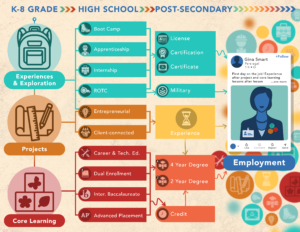Recent Research on Learning

One more study to add to last week’s roundup of science and the brain: findings from another recent study suggest a biological link between music and language skills – specifically, between the ability to keep a beat and the encoding of speech sounds in the brain. Keeping a beat accurately involves “synchronization between the parts of the brain responsible for hearing as well as movement,” notes the press release. Student volunteers who could more accurately tap their finger in time with a metronome also had brains that responded more consistently to heard syllables. Musicians, incidentally, have very consistent brain responses to sound. “It may be that musical training – with its emphasis on rhythmic skills” could lead to “stronger sound-to-meaning associations that are so essential to learning to read.”
From spoken language to the written word, next: a recent study suggests that e-readers can make reading easier for people with dyslexia. By configuring e-readers to display on a few words per line, some dyslexic readers were able to read more easily, quickly, and with greater comprehension. The reason this helps is that many problems dyslexic readers face stem from an inability to concentrate on letters within words, or words within lines of text (problems with “visual attention”), or a failure to recognize letters when they appear within words (“visual crowding”). The study found that a third of dyslexic readers who had trouble with visual attention or visual crowding benefited from the e-readers, while readers without these problems did better with more traditional text display.
And one more tech gadget that does more than entertain: engineers at UC San Diego developed an iPad app that “helps students learn spatial visualization, an essential skill for doing well in science, math, and engineering.” The app teaches you spatial visualization by letting you rotate 3D objects to view them from different angles, and to sketch in 3D and 2D. A built-in tutor tells you if your 3D sketch is correct or not, and helps you get to the right answer. The app can also alert teachers to where individual students are struggling. After working with the app for about three weeks, half of a group of 23 high school students had mastered the content of the app and no longer required tutoring. The developers’ goal is to make the app publicly available next summer; version compatible with PC and Android tablets will follow.





0 Comments
Leave a Comment
Your email address will not be published. All fields are required.